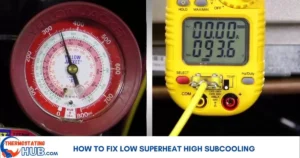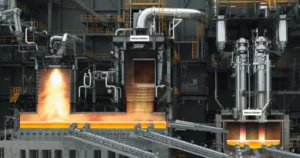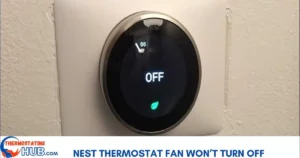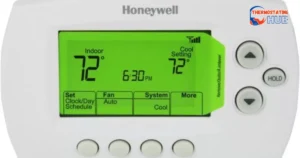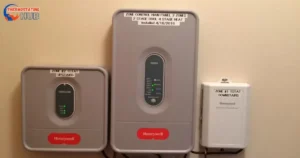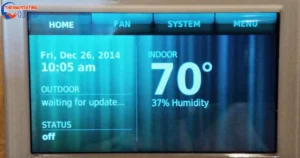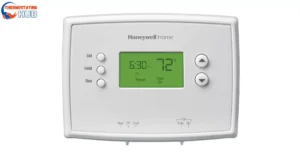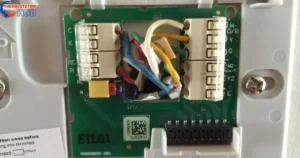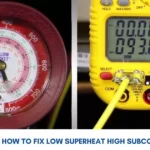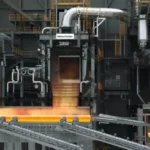Keeping your home warm becomes a top priority as winter approaches. Nobody wants to find their Honeywell thermostat blowing cold air when it’s hot. It can be miserable as the temperature drops and the weather changes.
Let’s explore solutions for the problem of a Honeywell thermostat not heating up. The good news is there are solutions at your fingertips.
Incorrect thermostat wiring is a common reason for the device blowing cold air on the heat setting. Another potential issue is a heat pump system, specifically a misconfigured reverse valve. To fix this, revisit your thermostat settings. Ensure you select the right system type and carefully set the reverse valve.
Now, let’s make sure your home stays cozy when you need it most!
5 Possible Reasons a Honeywell Thermostat is Blowing Cold Air on Heat Mode
Your thermostat blowing cold air on the heat setting could be due to various reasons.
Let’s explore five common ones below.
Incorrect thermostat wiring
Incorrect thermostat wiring tops the list of reasons why thermostats may not function as expected. Loose wires on thermostat terminals and shorts contribute to the wiring problems homeowners often encounter.
These issues are especially common after upgrading to a new thermostat. Honeywell thermostats typically accommodate conventional and heat pump systems, leading to potential wiring mistakes.
To avoid these problems, start by identifying the type of system you have. Wiring for a heat pump differs from that of a conventional heating system. Knowing your system type helps ensure correct thermostat wiring.
How can you determine your system type? If you have a gas/electrical furnace, your thermostat typically has a wire in the W terminal. On the other hand, for a heat pump system, expect a wire in the W2 or AUX terminal.
With this knowledge, you can wire your thermostat correctly, ensuring your home stays warm. 🔧
Incorrectly Configured Reverse valve
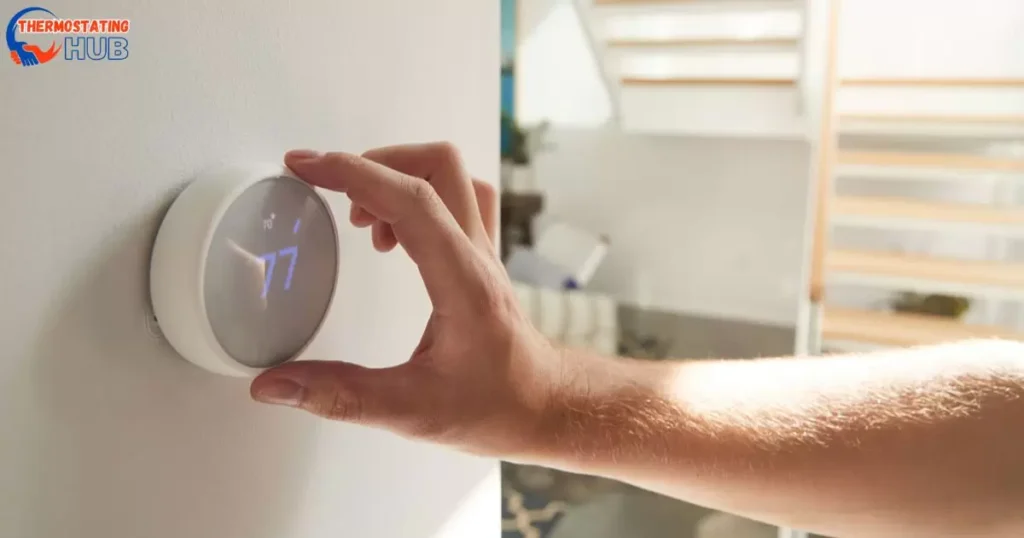
If you are experiencing cold air blowing out when your thermostat is set to heat, you may have misconfigured your reversing valve.
Go to your thermostat settings and switch from heating to cooling. Set the temperature about 2 degrees lower than the current temperature reading. Feel the air that comes out of the vent. Is this air cool or warm?
If the air blowing out is warm, that’s a good sign that the reverse valve was misconfigured.
If that’s the case, you’ll need to make some corrections in the reverse valve setting and wiring. Follow these steps.
Read also: Emerson Thermostat Blinking Flame Icon
Step 1
Go to the thermostat configuration, enter the correct system type, and change the reversing valve setting.
Step 2
Remove the thermostat cover from the wall, and don’t forget to take a snap of the current wiring (you may need to restore your wiring to the current one.)
Step 3
Look at the R and RC terminals; if there is only one wire on one of the two terminals, put a Jumper(connector) between R and RC terminals. If you use a heat pump system, move the W wire to the W2 terminal.
No power to your furnace/ HVAC system
When your furnace or HVAC system lacks power, calling for heating won’t make a difference. If circuit breakers trip, your outside furnace or heat pump system loses power.
To ensure your system has the necessary power supply, check the breakers controlling your HVAC system and reset them if needed.
Power interruptions to your HVAC system can happen for various reasons, not just tripped breakers. Even an open furnace door can cut power, preventing your furnace from heating up.
Here are steps to prevent power cuts within your system:
- Ensure HVAC system panels or doors are securely closed. Most have a safety switch preventing operation with open doors.
- Check for blown fuses on the control board inside your furnace.
- Inspect wires on the terminal block of your furnace, matching them with those near your thermostat.
For further diagnostics, use a multimeter to measure the voltage on the RC and R and between other wires in your thermostat. A thermostat typically operates between 25-30 volts; anything higher than 30 may indicate a faulty transformer, while anything below 20 may suggest a short circuit.
If voltage issues arise, it’s advisable to seek professional assistance. ⚡
Bad Furnace Control Board
The HVAC control board plays a crucial role, receiving instructions from your thermostat and coordinating the heating and cooling processes. While it’s uncommon, this component can malfunction or become defective.
The good news is that control boards are replaceable. When facing issues, calling a professional ensures a smooth replacement process, sparing you from the hard work.
If your HVAC system seems out of sync, it might indicate a faulty control board. Let the experts handle it for a hassle-free fix.
Incompatible thermostat
Newer thermostats don’t always play well with older HVAC systems. Using an incompatible thermostat with an older system can lead to persistent issues in controlling indoor temperatures.
This concern is particularly relevant for newer smart thermostats. Before investing in a programmable thermostat, take the time to check its compatibility with your existing system.
Ensuring compatibility upfront can save you from the frustration of dealing with temperature control problems later on.
Read also: Outside AC Unit Running But No Air Blowing Inside
Mastering Honeywell Thermostat Care: Expert Strategies for Maintenance and Issue Prevention
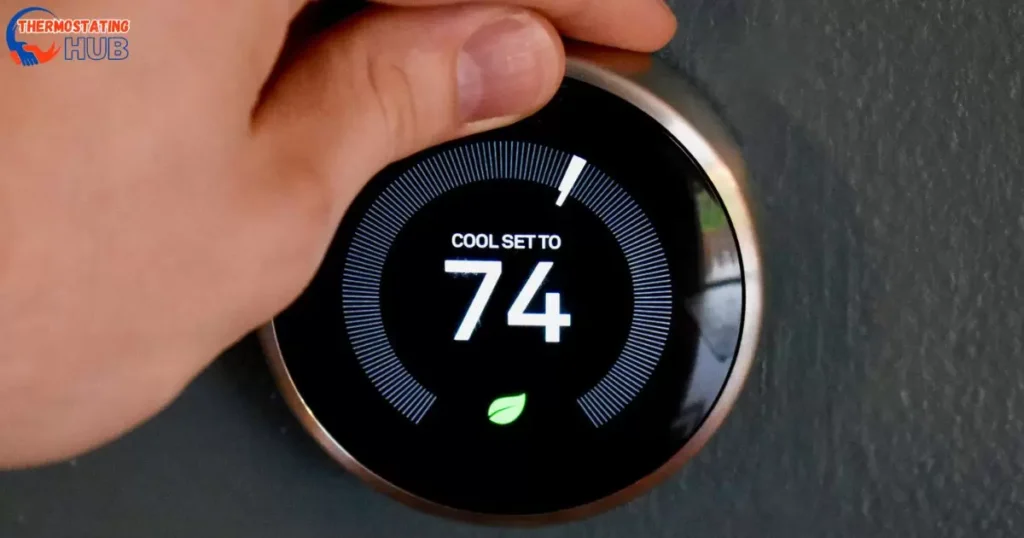
Mastering your Honeywell thermostat’s care involves expert maintenance and issue-prevention strategies. Regular maintenance ensures your thermostat functions optimally during crucial times, such as the heating season.
Wiring Integrity: Check thermostat wiring for loose connections or shorts. Correct wiring issues promptly to avoid malfunctions.
System Compatibility: Ensure compatibility, especially when upgrading to newer thermostats. Incompatibility can lead to persistent temperature control problems.
Power Supply Checks: Periodically inspect breakers controlling your HVAC system. An open furnace door or blown fuses on the control board can disrupt the power supply.
Control Board Vigilance: The control board is crucial in relaying instructions. Regular inspections and timely replacement, if needed, can prevent malfunctions.
Proactive Measures: Use a multimeter for voltage checks and promptly address discrepancies. Regular professional maintenance can catch potential problems before they escalate.
Expert Tip: Invest time in regular thermostat checks and professional maintenance to ensure a comfortable home environment and prevent unexpected issues.
Decoding Honeywell Thermostat Performance: Unveiling the Pros and Cons
Deciphering the performance of Honeywell thermostats involves uncovering both their advantages and drawbacks.
Pros:
- Reliability: Honeywell thermostats are known for their reliability, providing consistent temperature control.
- User-Friendly: User-friendly interfaces make these thermostats accessible for homeowners, whether adjusting settings or programming schedules.
- Compatibility: Honeywell offers a range of thermostat models compatible with various HVAC systems, providing flexibility.
- Smart Features: Many Honeywell thermostats come equipped with smart features, allowing remote control via mobile devices for added convenience.
- Energy Efficiency: Honeywell emphasizes energy-efficient designs, helping users manage and reduce their energy consumption.
Cons:
- Compatibility Concerns: Some users may face compatibility issues, especially when integrating newer smart thermostats with older HVAC systems.
- Learning Curve: Despite being user-friendly, advanced features may have a learning curve for those unfamiliar with programmable thermostats.
- Price Range: While offering diverse options, Honeywell thermostats can vary in price, potentially exceeding budgets for some consumers.
Decoding the performance of Honeywell thermostats allows users to make informed decisions based on their specific needs and preferences.
| Feature | Honeywell Thermostats |
| Reliability | High |
| User-Friendly | Yes |
| Compatibility | Varied HVAC Systems |
| Smart Features | Available in Many Models |
| Energy Efficiency | Emphasized |
| Compatibility Issues | Possible, Especially with Older Systems |
| Learning Curve | Some for Advanced Features |
| Price Range | Variable |
Unlocking Honeywell Thermostat Wisdom: Essential Key Takeaways for Optimal Operation
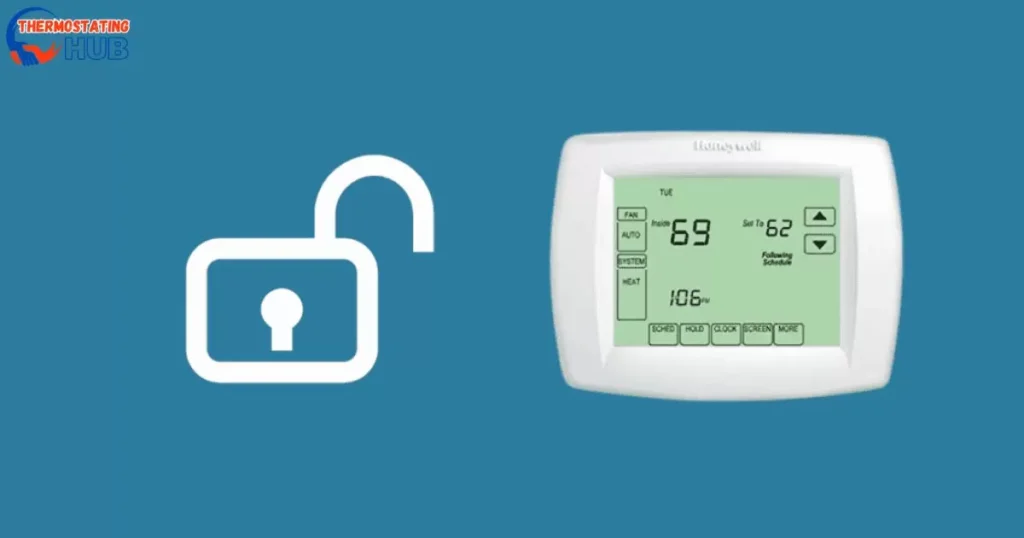
Unlocking the wisdom for optimal operation of your Honeywell thermostat is easier than you think. Let’s break it down into essential takeaways!
Know Your Wiring: Check for loose wires or shorts in your thermostat wiring. It’s like ensuring all the right connections for a smooth operation.
Check Compatibility: Upgrading your thermostat? Make sure it plays nicely with your HVAC system. Compatibility is the key to harmony.
Power Play: Keep an eye on breakers controlling your HVAC system. An open furnace door or blown fuses can be power disruptors.
Control Board TLC: Your control board is the maestro of instructions. Regular check-ups and timely replacements keep the harmony in your home’s symphony.
Voltage Check Dance: Grab a multimeter and check the voltage. Anything off? Address it pronto. Think of it as giving your thermostat a health check.
Pro Tip: Make thermostat TLC a routine. Small bills and timely fixes will keep your home cozy and your thermostat smiling. 😊
Read also: Nest Thermostat Blowing Cold Air on Heat
Answers To Key Questions
Why is my Honeywell thermostat blowing cold air on heat?
Possible incorrect thermostat wiring can make your Honeywell thermostat blow cold air when set to heat.
Why is my thermostat blowing cold air when on heat?
If your thermostat is blowing cold air when set to heat, it could be due to incorrect thermostat wiring.
Why is my Honeywell thermostat not turning my heat on?
Your Honeywell thermostat may not turn on the heat due to potential issues with thermostat wiring or a misconfigured heat pump system.
Why the AC is blowing cold air in heat mode?
If the AC is blowing cold air in heat mode, there might be an issue with thermostat wiring or a misconfigured system, especially in heat pump setups.
Final Thoughts
We’ve covered common reasons your Honeywell thermostat may blow cold air on the heat setting, such as incorrect wiring, a misconfigured reverse valve, or a power failure in your system.
If none of the tips in this guide resolve the issue, it’s advisable to seek help from licensed professionals. Professionals can quickly and safely address the problem, ensuring your heating system operates efficiently.
Thank you for taking the time to read this article! If you have any additional questions or need further assistance, please don’t hesitate to ask. I appreciate your engagement! 📚😊

I’m James Wilson, your HVAC maestro from “Thermostating Hub.” Elevate your comfort with my expertise in heating, ventilation, and air conditioning. Let’s transform your space into a haven of perfect temperatures, tackling HVAC issues with precision and enthusiasm.
![Honeywell Thermostat Blowing Cold Air on Heat Setting [Fixed]](https://thermostatinghub.com/wp-content/uploads/2023/12/honeywell-thermostat-blowing-cold-air-on-heat-setting.webp)



